This week, a rare opportunity crossed my desk. PlayStation invited me to spend some time with one of two new babies it has launching this quarter, the DualSense Edge pro controller.
When PlayStation first announced the controller, I was openly stunned by the price. At an eye-watering $330 in Australia, it seemed beyond an extravagance. It seemed too expensive even for a luxury device designed for people who fancied themselves the best of the best on console.
I can hear the PC die-hards scoffing from the other room. Keep it down in there.
In accepting Sony’s invite, I hoped that getting hands-on with the controller would allow it to clarify itself somewhat. And it did, actually. There are still some aspects of the controller that feel over-engineered at first blush, but there are many other facets of it that fell into place the moment it was in my hands.
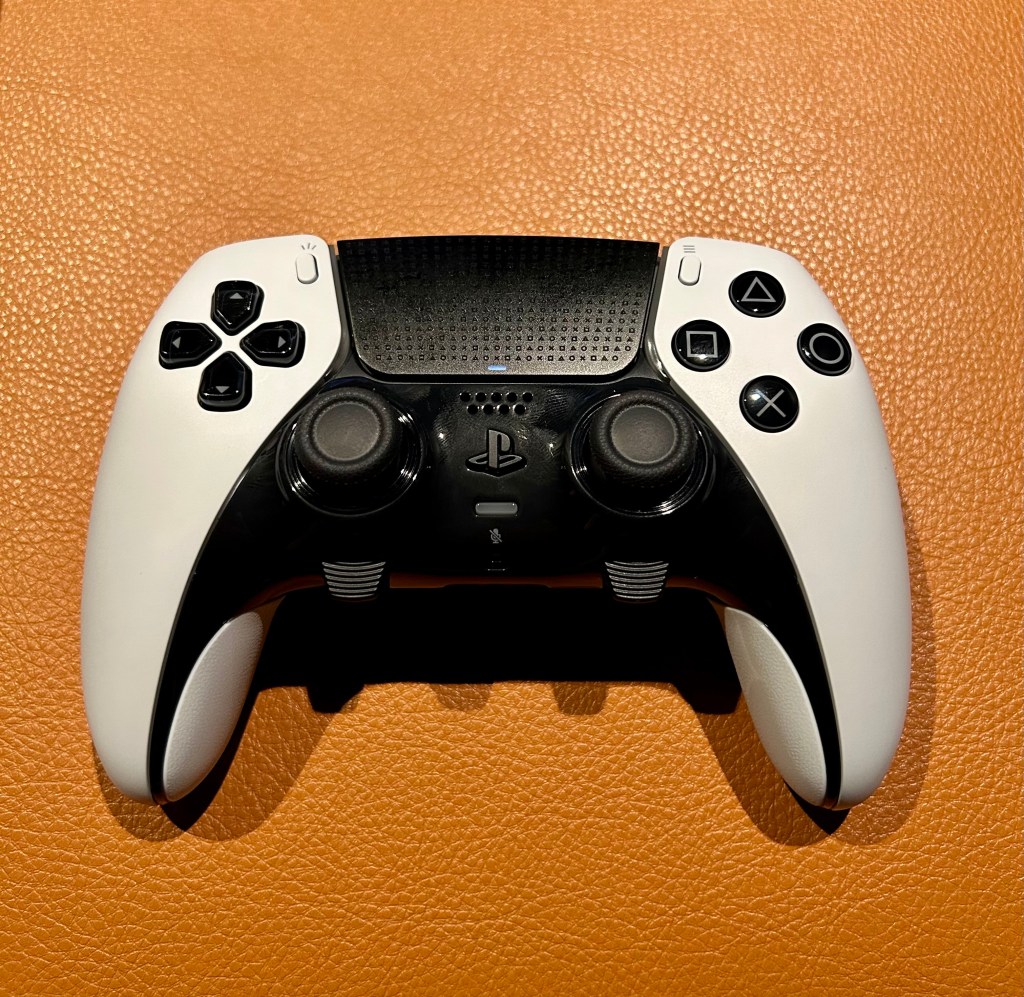
Let’s start with the basics
The DualSense Edge is the same size as a standard DualSense controller. Same size, same shape, same silhouette. The face buttons, triggers, touchpad and default sticks are all the same, standardised size. It’s noticeably heavier than a standard DualSense. While I don’t think it’s necessarily heavy enough that it would cause a wrist ache during a long play session, such a problem might be mitigated by its overall shorter battery life. Yes, the trade-off for all the DualSense Edge’s bells and whistles, as you may have read already, is that it holds an even shorter charge than the already power-hungry DualSense.
Its identical dimensions do mean that it will fit into any DualSense charge dock, though. This means, if you like to keep one controller on charge at all times while running down another, it can slot into that rotation without complaint.
The controller’s outer shell has had a few changes. The rear plates have a subtle grading that PlayStation says increases grip. I don’t know about that — it’s so fine you could almost miss it if you didn’t know it was there. I could certainly feel the grading under my fingertips when I went looking for it, however. The touchpad has been decorated with the PlayStation symbols (the O, X, square and triangle), which is a nice touch and looks quite cool. Beneath the touchpad is a plastic fascia that houses the controller’s new interchangeable control sticks (more on those in a sec). This plastic is a dark but translucent black. However, the plastic is still of a kind that will show up your fingerprints the most.
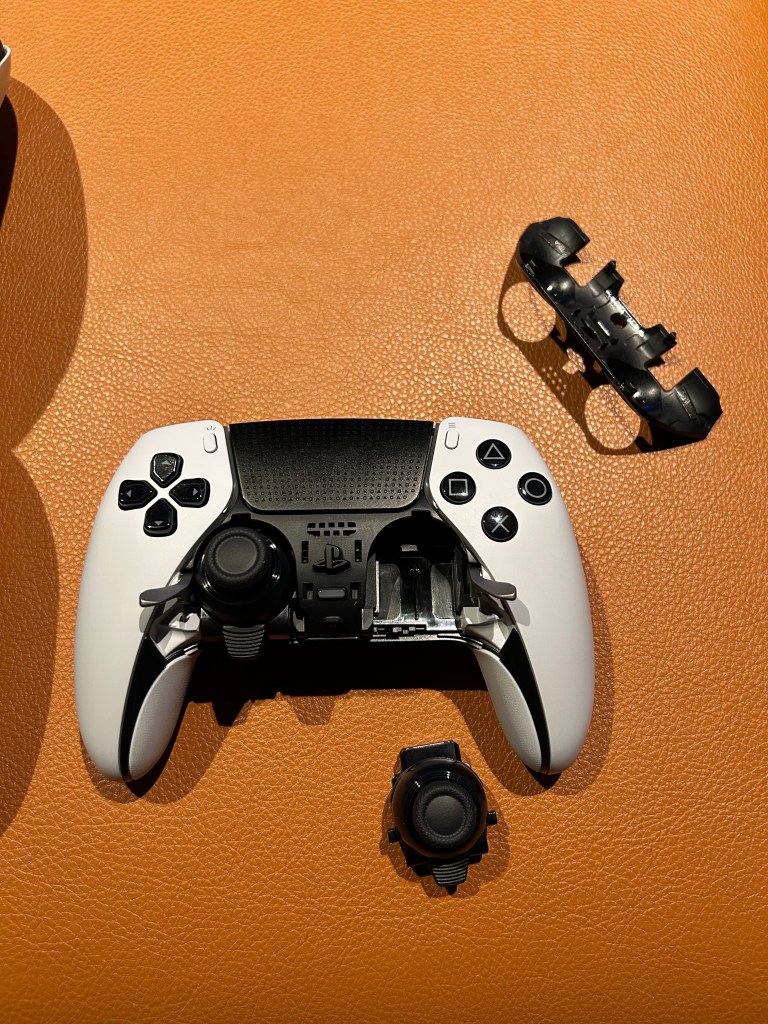
What’s different?
The first thing you’ll notice is the pair of small new function buttons beneath either control stick. These new buttons can be mapped to basic face button controls and, when held down, can be used to access certain functions of the DualSense Edge. This is the part of the controller’s kit that struck me the most. I haven’t seen a first-party controller for a console with native implementation before. Holding down either function button opens an onscreen popup menu that allows you to switch between pre-set controller profiles. Holding the function button and pressing the Option button together opens the full DualSense Edge menu, where you can create said preset profiles.
Button remapping, and stick and trigger deadzones, are all contained in these menus. Deadzones can be programmed on a scale from 1-100, to tell the controller how and when you want it to react to input. These can be finetuned futher across both sticks and triggers to create custom profiles. Alternatively, you can choose from a list of preset stick deadzones with names like “Precise” or “Smooth” depending on the kind of game you’re playing. A fast-paced FPS might warrant precise aiming, while a driving game might warrant a “Heavy” stick.
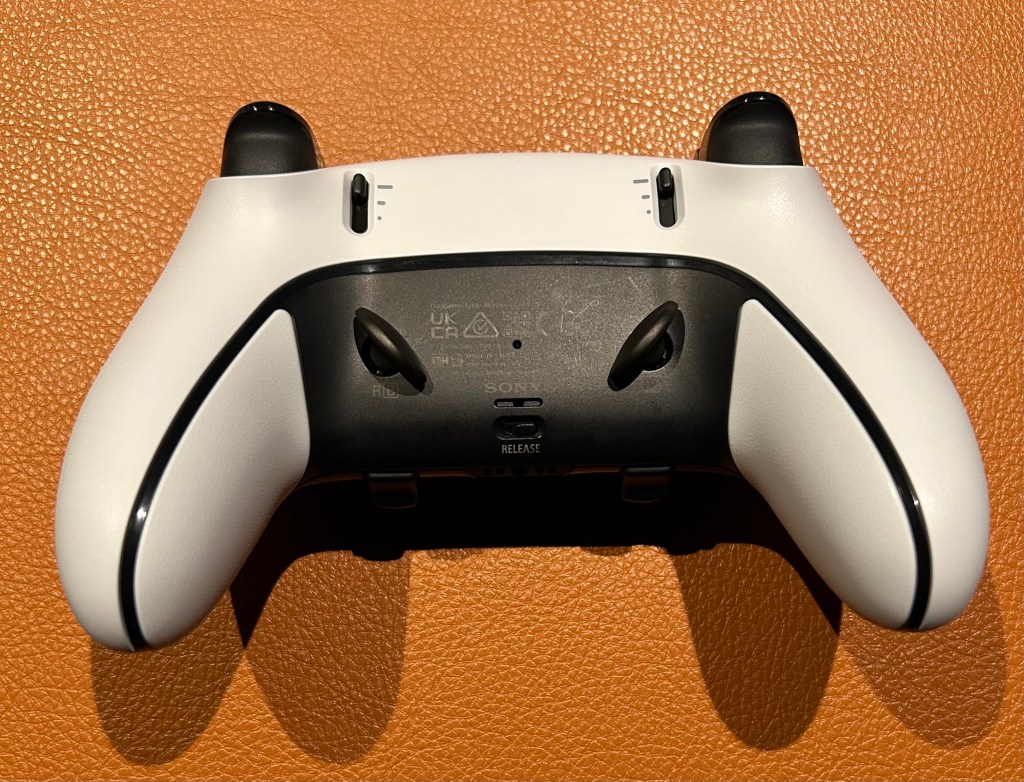
The sticks can be removed from the unit and replaced with different designs. Some are taller, some are shorter, and some just change out the head on the stick for a different shape. I was partial to the classic PS1/PS2-style DualShock sticks — tall and with a rounded dome on top. Replacing the sticks is simple enough, with a twist-and-pull style locking mechanism to release or secure them. It is just a plastic lock though, so if you were hoping for the simple-but-effective magnet solution employed by the Xbox Elite Controller, then I’m afraid it isn’t here.
The paddle ports on the rear of the controller, however, are magnetised, and resemble the Xbox setup. What I like about these ports is that they’ve been placed in a way that feels quite natural. They sit right where I place my middle fingers on the back of the controller. What this means is that PlayStation feels the correct and canonical way to hold your DualSense controller is with your index fingers on the shoulder buttons and your middle fingers resting on the back. Those of you who hold it in a claw grip, with your index and middle fingers on the shoulders and triggers, are wrong and have always been wrong, and now, thanks to the DualSense Edge, I have proof.
The two control sticks, beneath the black fascia on the front, are individually removable. I’m still not entirely sure why. It certainly makes cleaning the device easier, but it introduces another point of contact, a new vector for wear-and-tear. Sony is planning to sell the Stick modules separately for around $35 a pop. I said, jokingly, that I could see these modules coming in different colours before long, to which my Sony rep replied, “We have nothing to talk about there.” The stick modules lock in with a silver clasp that looks similar to the controller’s optional rear paddles. Of the entire, admittedly impressive unit, the stick modules were the part that (on first inspection, at least) felt the most over-engineered to me.
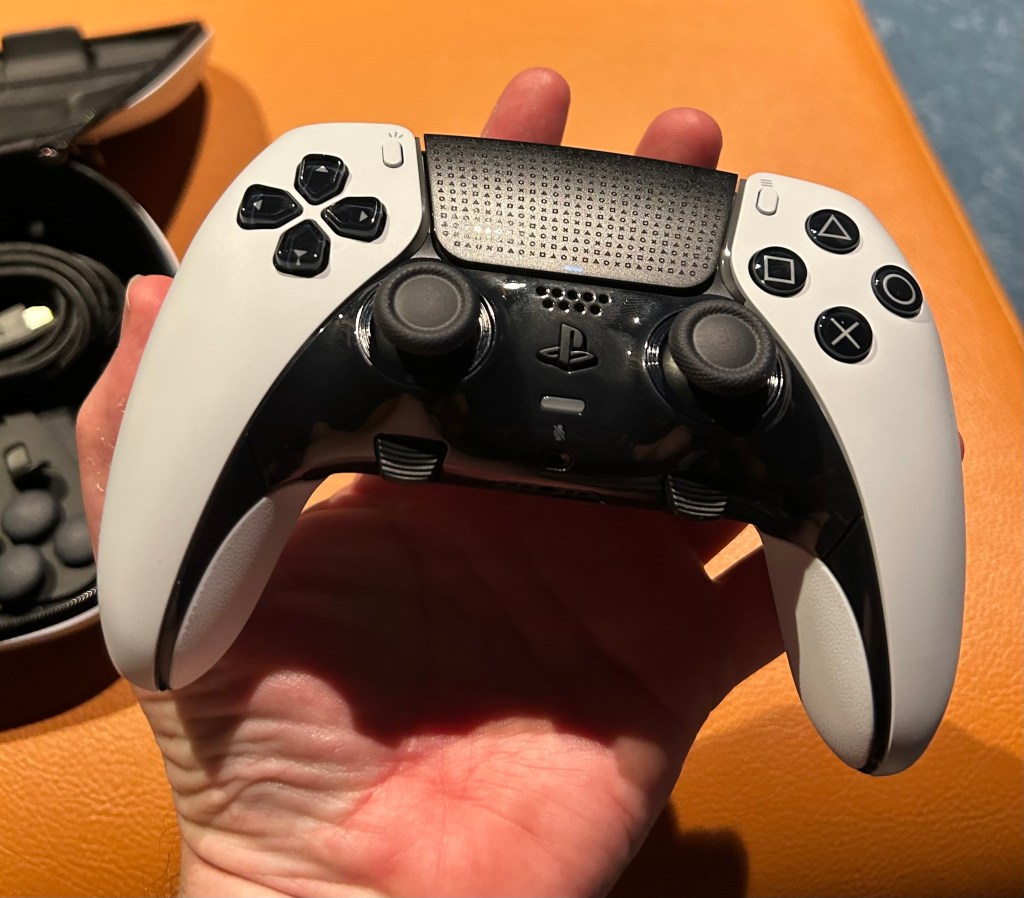
I need more time
Ultimately, everything I’ve written above is based entirely on my first impressions. As I said, I only got an hour with the controller. In this period, I was able to play small sections of Call of Duty: Modern Warfare II, Gran Turismo 7, and Horizon: Forbidden West, swapping inputs, sticks, and paddles. Why these three games? Well, they’re mechanically very different from one another, which makes them useful for demonstrating the importance of building game or genre-specific profiles. The trigger tension in Horizon: Forbidden West‘s bow is nice, for instance, but I can relax the tension on the trigger if it’s getting a little much. These facets of the DualSense Edge are impressive, and you can feel the difference when you swap between specific profiles on the fly.
There’s one final question that I’m sure many of you will be asking. Based on what I’ve seen so far, do I think it’s worth that enormous $330 price tag? I still think the price is high, but I can also see why it’s up there. This controller clearly cost a fortune to research, develop, and produce. On top of that, I think it’s pretty clear by now that Sony isn’t expecting them to fly off the shelves quite the way the standard DualSense does. The DualSense Edge is a controller not for the everyday player, but for the hardest of hardcore. It’s a luxury item, a controller for people who want perfect, personalised inputs. It is aimed at a very specific audience.
But, of course, an hour is barely scratching the surface. For a controller like this, you have to live with it for a while. A week, a month. How does your relationship with it change as you get used to its customisation systems? Does it change how you feel about the standard DualSense? These are all questions I can only answer with more time. And I do hope to have more time with the DualSense Edge in the future.
Kotaku Australia travelled to Sydney as a guest of PlayStation.
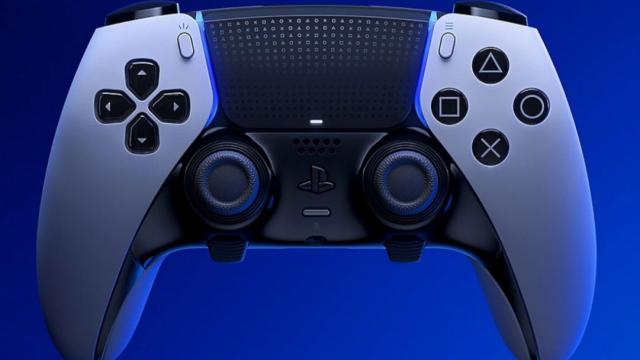
Leave a Reply